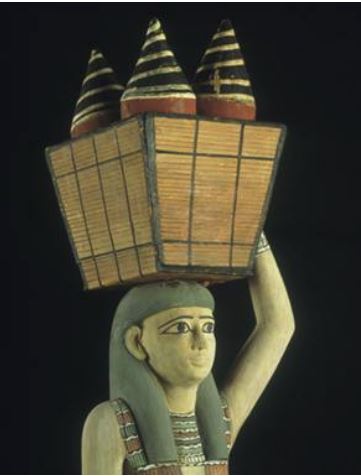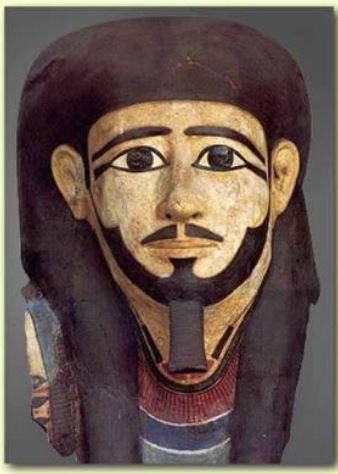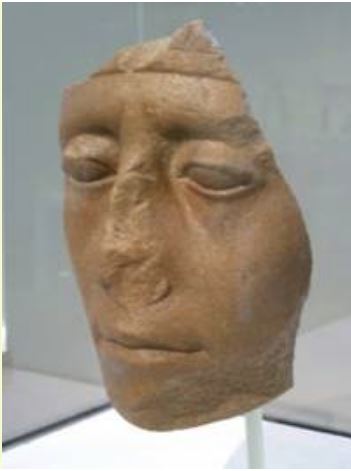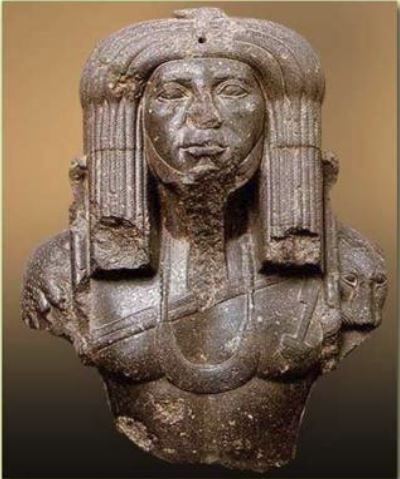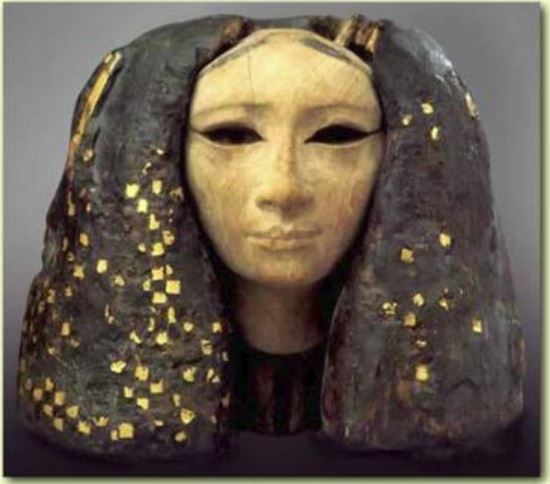Oahspe Study
THE EXODUS OF THE HEBREWS, MOSES AND PHARAOHS PART 6
12th Dynasty Middle Kingdom Art is Hyksos Art
Art as Indicator of Culture
Even without textual references, changes in culture are often recognized by changes in art. No less is this the case in Ancient Egyptian art where dramatic changes in the styles and content of Egyptian art occurred in three major consecutive periods: The Old Kingdom to the Middle Kingdom, and then the New Kingdom. With all the available artifacts, why then is there still so much confusion that keeps conventional Egyptology holding on to misconstruction of past events and periods?
A more objective understanding of past periods requires archaeologists and historians to make thorough and unbiased examinations of sites and artifacts for historical context and anthropological value. But even for unbiased historians and archaeologists, having access to a wide range of artifacts has been hampered by, among other things, politically / culturally defined rules and restrictions by authorities (in government, academia, media and the like), treasure seekers, object gathering for the "wow factor", the whims and wishes of wealthy patrons and so on. Such influences in turn have led to the search and discovery of selective artifacts at selective sites:
||......A hiatus in Egyptological research also resulted from a lack of attention to the life of ordinary people, a defect of archaeological research that has only recently been addressed. The Asiatic communities were farmers, artisans and traders, headed by local chieftains. No massive monuments were erected in their villages for future tourists to gawk at, no hedonistic sculptures were produced for museums to vie over, nor were the chieftains entombed with golden artifacts for future collectors to salivate over.
"It is no wonder that the present state of studies of ancient Egyptian civilization is enormously one-sided," declared Manfred Bietak, excavator of Qantir, the site on which the biblical city of Avaris was identified. "In Egypt, temple sites and cemeteries have been chosen as objects of excavation and study because they yield more museum objects and, with their imposing architecture and representations of fine arts, are far more likely to impress the trustees of institutions than the decayed mud-brick architecture of town sites with their tons of potsherds.......|| Egypt and the Semites by Samuel Kurinsky; 1994.
Old Kingdom and New Kingdom Art versus Middle Kingdom Art
Despite this situation, there exist sufficient examples of art to indicate that the peaceful pastoral and cultural activity scenes of the Middle Kingdom art replaced the Old Kingdom depictions of kings vanquishing their enemies. Then following the end of the Middle Kingdom and so called Hyksos domination, the New Kingdom art harked back to the style of the Old Kingdom, where Pharaoh is once again depicted as a God King and Warrior / Vanquisher of enemies in idealized, unrealistic, monumental forms.
When the art of the New Kingdom embraced a return to the idealization and representation of the Egyptian kings as God kings like that of the Old Kingdom, a change in religion and culture also took place. The deity, Amun-Re, which was a combination of two ancient Gods in the form of supreme deity or King of the Gods, superseded the Osiris cult. The New Kingdom's appropriation of Amun-Re, imbued him with the status of King of Gods personified as a man on a throne with a beard. In a mortal reflection of this "man-god king" paradigm, the Pharaoh was also raised to god-king status, whom non other could match.
One outstanding exception to the New Kingdom art, however, was the expressive art of the reign of Akhenaton which was also accompanied by a brief change in religious and cultural orientation. Akhenaton rejected the man-king of Gods, Amun-Re, and the pantheon of minor gods and goddesses, instead embracing an ancient personification of the sun disk "Aton". But his short-lived revolution was soon crushed and his name and memory were obliterated by the powerful Theban based priesthood of Amun-Re when Akhenaton died. Because of his religious and cultural revolution, Akhenaton was considered a heretic in the eyes of Egyptian Hegemony. His existence as one of Egypt's Pharaohs was unknown until he was rediscovered in the mid 19th century among the ruins of his city, Armana.
In the Middle Kingdom, Asiatics as slaves to the king and wealthy were plentiful. Among the scenes and statues from this period, Asiatic slaves are also depicted and recognized by their appearance, style of clothing and servile contexts. The following figure of a serving woman indicates the typical multi-colored striped clothing of the Asiatics, integrated with Egyptian styles of face and hair adornment.
|
Statue of a serving woman from Funerary Mask Painted on Senwosret III - Middle Kingdom Middle Kingdom Egypt Stucco and Linen 12th Dynasty King
|
A significant difference between Old and New Kingdom art versus Middle Kingdom art is the more realistic and emotional characterization of the statues of the Pharaohs of the Middle Kingdom. Instead of the imposing idealized God-like representations of the Old Kingdom, these Middle Kingdom statues depicted more human, individual and expressive personalities.
Realism of Middle Kingdom Portraiture
|| Another major masterpiece of Middle Kingdom sculpture, again of Pharaoh Senwosret III. Senwosret uniquely insisted that his sculptors depict his actual features on his monuments, not some approximation of a revived Old Kingdom type. The Middle Kingdom pharaohs were more worldly, having lost much of the old religious charisma attached to the Old Kingdom pharaohs in struggles with powerful regional nobility to hold the kingdom together and to reassert their authority. They had to compete and play politics to gain and to keep power. That realism is reflected in the realism of Senwosret's statues. In many, his large hooded eyes and down-turned mouth make him look tough, as in the sphinx. In this one, he looks long-suffering, as if to say to his subjects, "see what I must bear for your safety and welfare!" a very worldly and political appeal. His is one of the most memorable faces from the ancient world.|| (retrieved 5 Sept, 2013)
This artistic humanism complimented the Osiris cult, which unlike the previous God Kings of the Old Kingdom (who, by rule of the Kings, were considered to be the only mortals worthy of Eternal life), did not restrict life in the next world to the Pharaoh only. Within the Osirian cult, any who worshipped Osiris were able to gain status in this world and the next. Thus a restricted sort of egalitarianism evolved for those who would worship Osiris, but nevertheless one had to be wealthy enough to fulfill the funerary and ceremonial requirements associated with preparation for eternal life according to the Osirian cult.
||With the collapse of the Old Kingdom about 2160, there was also a big change in art styles. The carved reliefs of the Old Kingdom continue, still with the background all carved away. But the subject matter is different: in the Middle Kingdom, instead of Pharaohs crushing their enemies you get quiet scenes from daily life. Here you see a boy driving donkeys to thresh out the grain on the top register and on the bottom men winnowing the threshed grain. Over their heads, hieroglyphs explain what they are doing. The style of three-dimensional sculpture also changed in the Middle Kingdom. Pharaohs no longer look so serious and strong; now they look more boyish and eager, less like gods and more like people....|| (retrieved 1 Oct, 07)
The extract below details archaeological evidence that the rulers of the Middle Kingdom existed at the same time as the so called 2nd Intermediate era. Asiatic influence in the culture of the Middle Kingdom is preserved in art forms of the period including depictions of the Pharaohs whose identities are unmistakably those of the Middle Kingdom. This correspondence of the same art is supporting evidence that Pharaohs of the Middle Kingdom have been mixed up with the fable of the domination of the Hyksos:
||
.....In the nineteenth century, the discovery of a number of statues at Tanis,
the modern San el-Hagar in the east of the Delta, surprised art historians by
their unusual forms and facial features.
Their features and artistic style had not been known in Egypt earlier. The
unusual appearance of the statues convinced the archaeologists that these
sculptures could be attributed to the Hyksos rulers who had built their
residence at Avaris, the modern Tell el-Dabaa, in the vicinity of San el-Hagar.
These statues did not have the familiar and traditional idealistic forms and
features known in the Old Kingdom and the first half of the New Kingdom. The
statues found at Tanis had strange facial features, such as aged and tired
faces with high cheekbones and wrinkled cheeks, pouted mouths, and large ears.
Sphinxes were also discovered with lions' manes instead of the usual nemes
royal headdress, known from the Great Sphinx at Giza. These sculptures also
featured a kind of archaic wig and beard.
Closer examination of the names and features revealed that the original owners of
these sculptures were kings of the Twelfth Dynasty, namely Senusert III and
Amenemhat III. The statues had been usurped, or taken as their own, by later
kings........... These later kings had carved their names on the statues in the
places of the original owners' names.|| (retrieved 1 Oct, 07)
|
Black Granite Bust of Amenemhat III Head of a Female Wooden Statue Excavations of 1862 - Fayoum Lisht, Excavation of 1907 - Lisht, Area of the Pyramid of 12th Dynasty, Reign of Amenemhet III Amenemhet I - 12th Dynasty |
|
|
|
|
The wigged style headdress of the bust of the Pharaoh replaces the usual nemes, the striped head-cloth worn by Pharaohs in ancient Egypt, This style of wigged headdress is also depicted on the woman's head.
The apparent misidentification of Middle Kingdom art as Hyksos art by Egyptologists really indicates that the two were not separate periods. The style and content reflect the same themes and values that identifies the two Periods / Cultures as being the same.
All Oahspe references are from the Standard Edition Oahspe of 2007
● GO TO NEXT ARTICLE:
The Exodus Part 7 - The Co-existence of Egyptian and Asiatic Religions
